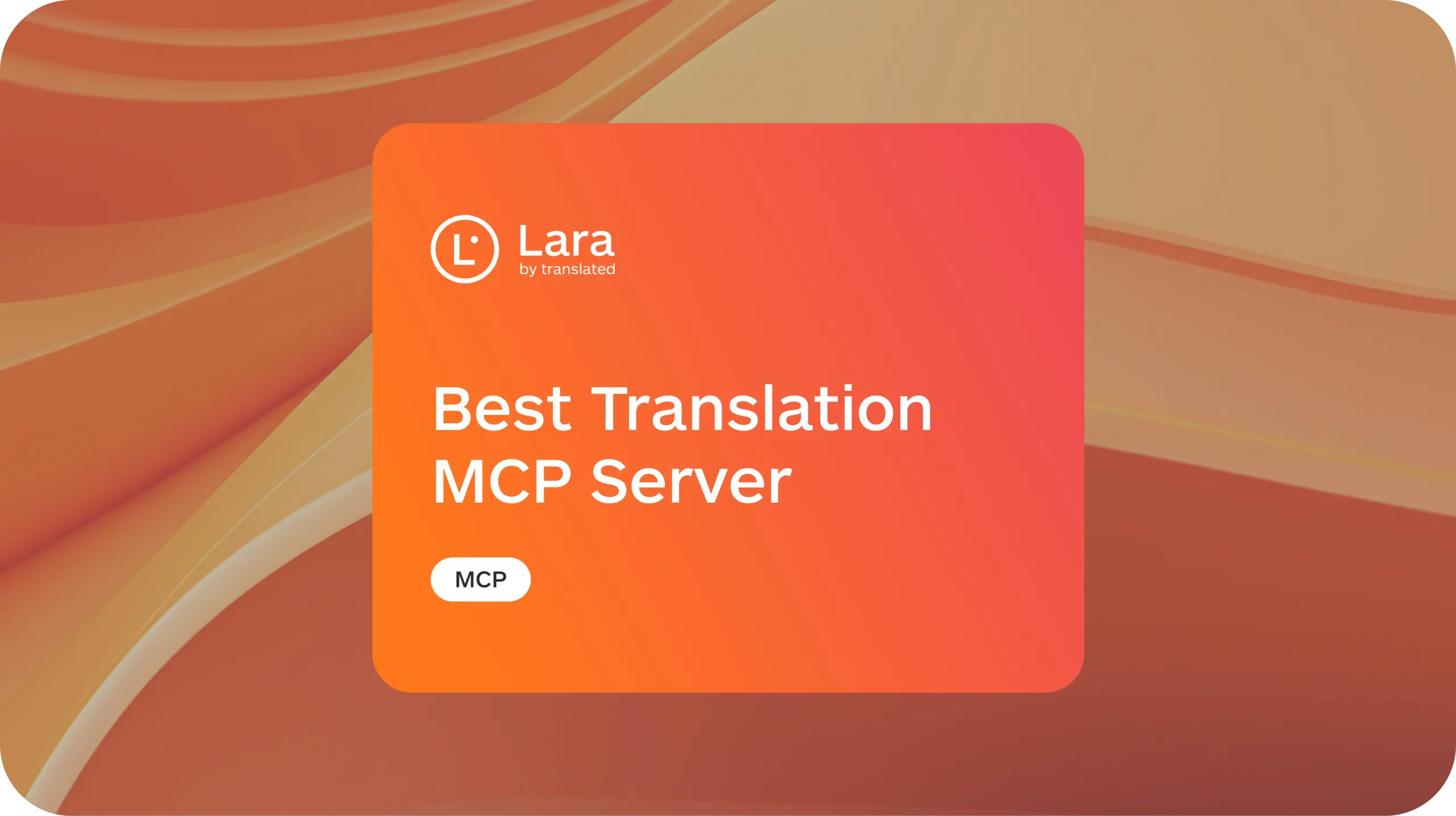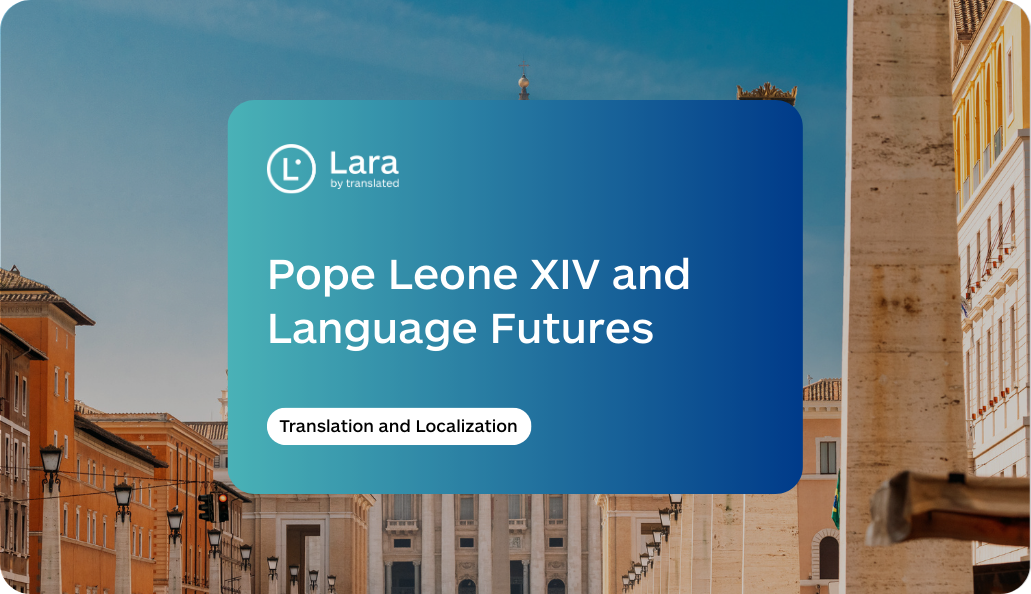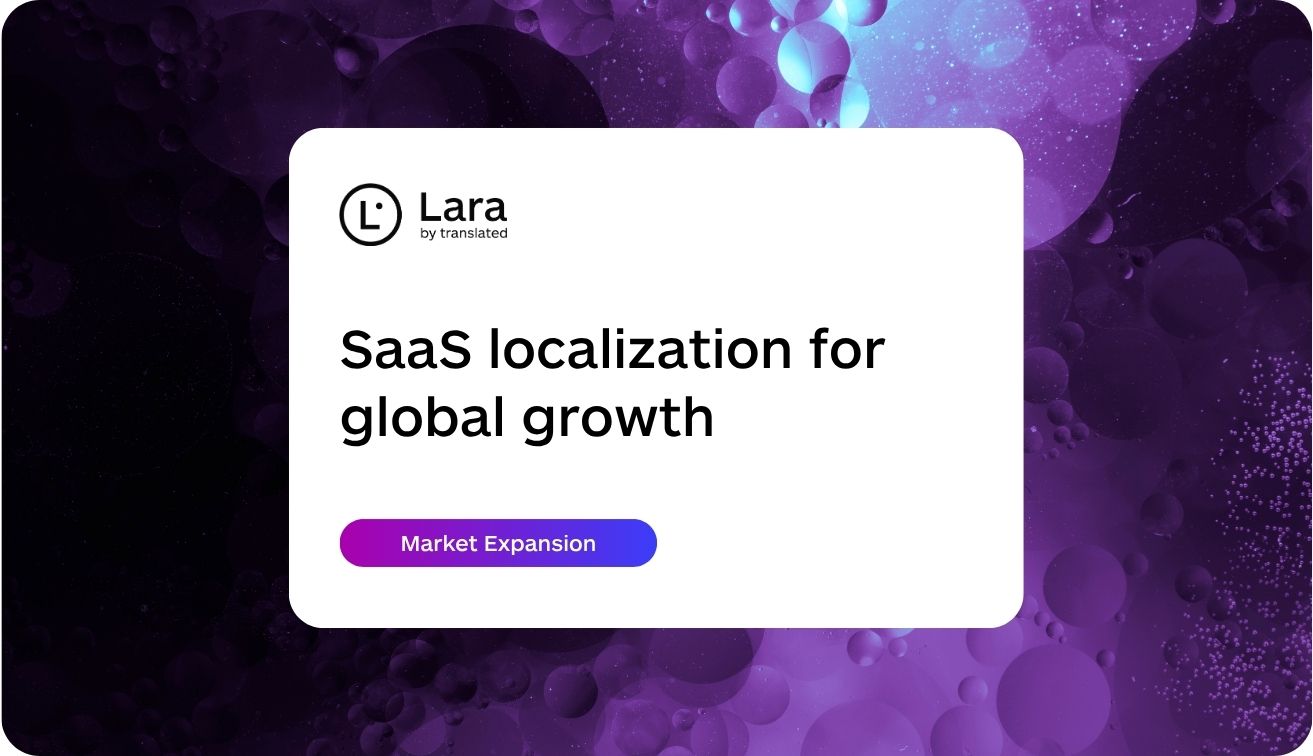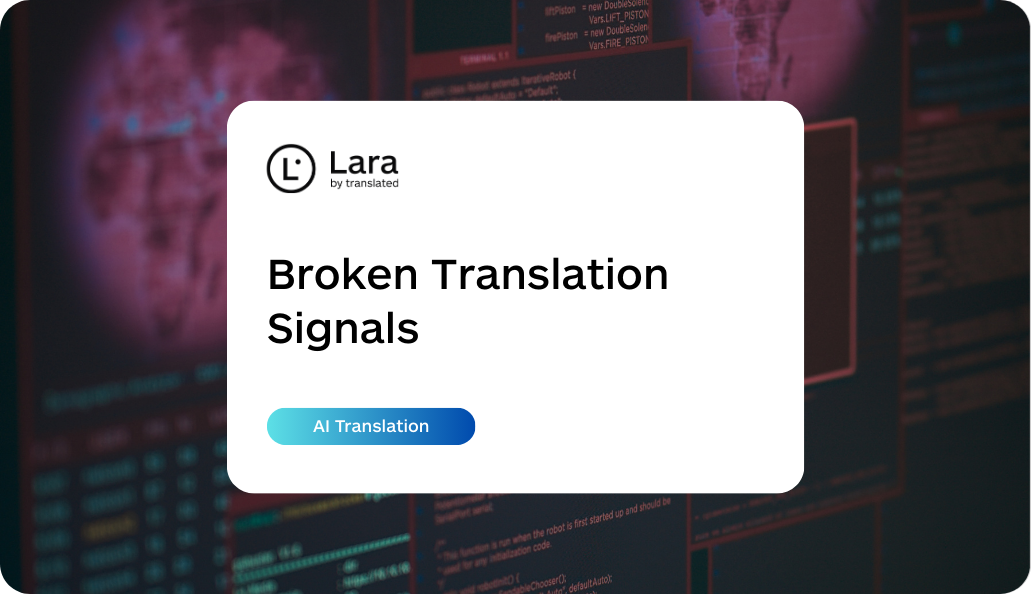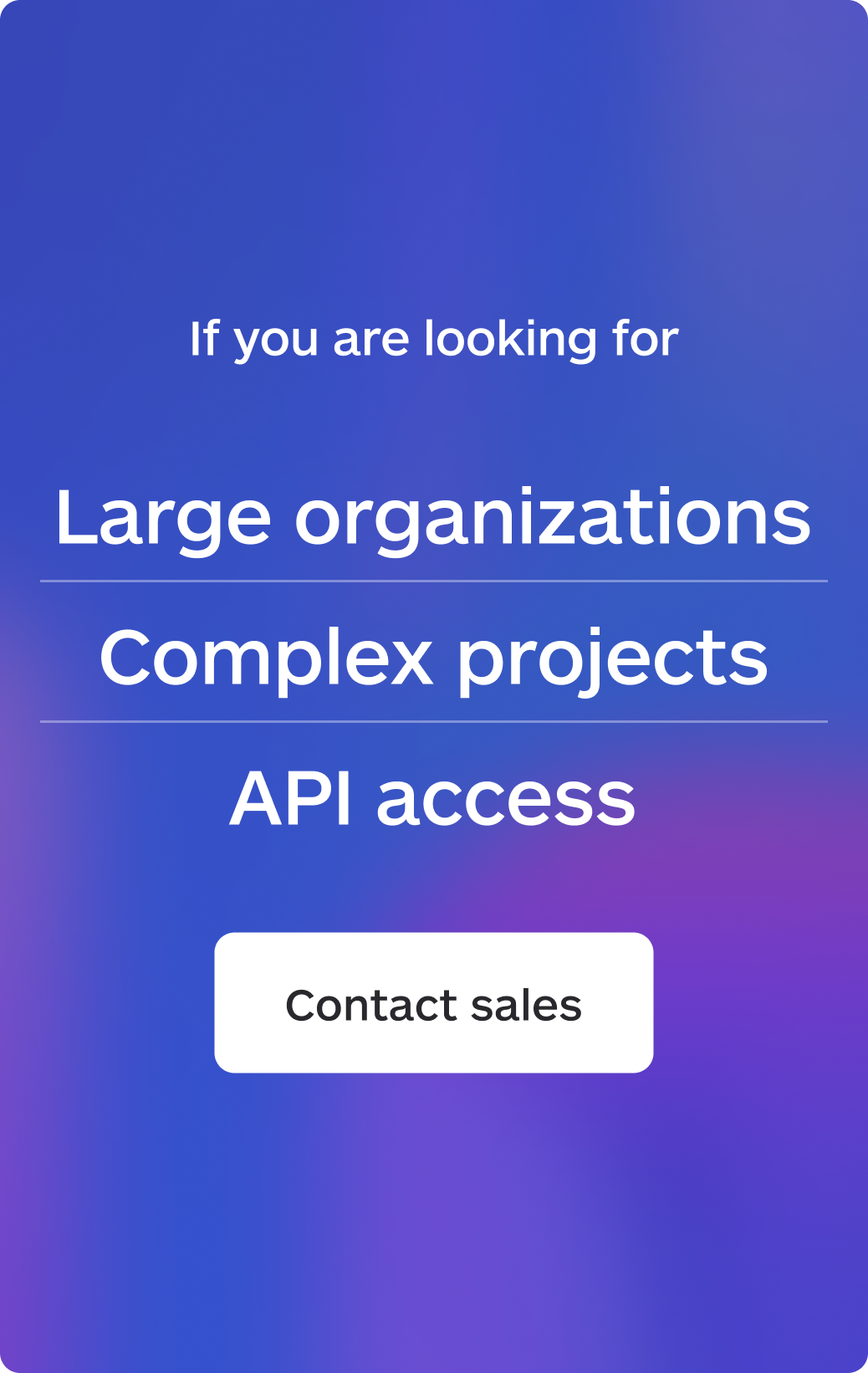As AI-powered workflows continue to evolve, so does the need for smarter, more flexible translation services. With the rise of the Model Context Protocol (MCP), developers can now extend the power of AI agents with external tools—including translation engines. But what exactly should an translation MCP server for language translation allow you to do?
In this guide, we break down the core capabilities you should expect from any MCP translation server—and explain why Lara Translate MCP Server is the most advanced solution available today.
What is an MCP Server for Translation?
An translation MCP server is a plugin-like service that connects AI models to translation APIs or engines via the Model Context Protocol. It enables natural language processing agents (like Claude, Cursor, and others) to translate text and documents in real time.
Think of it as an MCP text translation service that lives inside your AI—ready to convert, localize, and adapt content across languages.
What Should a Good MCP Language Server Do?
Whether you’re evaluating existing solutions or building your own, a modern MCP language translation tool should provide the following:
- Translate From and Into Any Language
The server should support bi-directional translation across a wide range of global languages—without requiring manual setup per language pair - Detect Language Automatically
A good MCP multilingual server should detect the source language on the fly, making it easier to build dynamic, global-facing apps - Support Context and Tone
Look for a server that accepts instructions or metadata—so you can guide tone, formality, or style (e.g., “use a friendly marketing tone” or “make it sound professional”) - Handle Both Text and Document Translation
Modern translation needs go beyond single sentences. The server should support mcp server translate documents and provide formatted output when needed - Seamless MCP Integration
Finally, it should work natively with any MCP client, allowing AI agents to call tools like translate with simple parameters
Why Lara Translate is the leading MCP multilingual server
Among the various options available, the Lara Translate translation MCP Server is the first and most advanced MCP implementation dedicated to language translation.
Here’s what makes it the standout choice:
- Full language coverage
Supports most popular languages with real-time language detection—ideal for applications with unpredictable or global input - Context-aware output
Accepts custom instructions to control tone, domain, and formality—making it more than just a literal translator. It’s a true mcp server localization engine - Built for real use cases
From customer support to internal document conversion, Lara supports text, message, and document translation with high performance and consistency - Plug-and-Play integration
Works out of the box with any MCP client via NPX or Docker. No need to reinvent the wheel—just plug in Lara and go multilingual
MCP Translate example
Here’s a simple example using the translate tool via an MCP-compatible app:
{
"tool": "translate",
"parameters": {
"text": "Let's make it happen!",
"targetLanguage": "de",
"instructions": "Translate for a startup marketing campaign. Keep the tone energetic."
}
}
This turns a one-line call into a branded, localized message—powered by Lara’s intelligent translation engine.
Final Thoughts
The future of AI is multilingual—and your AI should be too. When choosing a mcp server translation software, look for flexibility, intelligence, and seamless integration.
With full language coverage, tone customization, and easy setup, Lara Translate MCP Server is not just the first—it’s the leading MCP server language conversion engine available today.
Suggested readings
- Best MPC Servers for Business in 2025 (Tried & Tested)
- Model Context Protocol – A Guide for AI and Multi-Agent Systems
- Intro to Agent2Agent Protocol (A2A)
Useful links
- Getting started with Lara Translate MCP Server
- Lara Translate developer docs
- Lara MCP Server Github
- Lara MCP Docker
FAQ: MCP Language Translation Servers
What is an MCP server for translation?
An MCP server for translation is a tool that connects AI models to external translation services via the Model Context Protocol (MCP). It allows your AI agent to understand and convert text from one language to another in real time. These servers act like “translation plugins” that work inside your AI workflows, enabling accurate, multilingual communication.
How does the Lara Translate MCP Server work?
The Lara Translate MCP Server connects AI clients (like Claude Desktop or Cursor) to Lara Translate’s powerful API. It provides tools like translate that accept parameters such as the text, target language, and translation instructions. The server handles everything—language detection, tone adaptation, and contextual accuracy—making it an ideal MCP server for text translation or document localization.
What makes Lara Translate the best MCP multilingual server?
Lara Translate is the first MCP server built specifically for language translation. It supports over 100 languages, offers smart tone customization, and accepts context-based instructions. It integrates easily with any MCP-enabled AI platform and delivers consistent, high-quality results across both text and document translation workflows.
Can I translate documents using an MCP server?
Yes! A good MCP document translator should allow your AI to handle large pieces of content, including documents. While Lara currently focuses on text-level translation, its engine can easily support multi-paragraph and formatted content, making it ideal for document conversion in multilingual workflows.
What’s the difference between a translation API and an MCP translation server?
A traditional translation API needs to be manually called and integrated into your app. An MCP server acts as a ready-to-use plugin for AI agents that support the protocol, such as Claude or GPT running in MCP-compatible environments. It turns translation into a native, seamless part of your AI’s workflow—no complex integration required.
Is the Lara Translate MCP Server free to use?
The Lara Translate MCP Server itself is open source and freely available on GitHub. However, to use the translation functionality, you’ll need API credentials from Lara Translate. They offer free and paid tiers depending on your usage. Details here.
Can I customize tone and style with MCP translation?
Absolutely. One of Lara Translate’s most powerful features is the ability to customize the output using optional instructions. You can request translations that are friendly, formal, casual, promotional, legal, and more. This is essential for anyone using an MCP server for language conversion in brand-sensitive environments.
This article is about
- What an MCP server for language translation is and how it works
- Core features every MCP language server should offer
- The role of context, tone, and customization in translation workflows
- The benefits of using Lara Translate for multilingual AI applications
- Examples of real-world use cases powered by MCP translation
- Why Lara Translate is the first and most advanced MCP translation server
- How to integrate Lara Translate into any MCP-compatible environment
